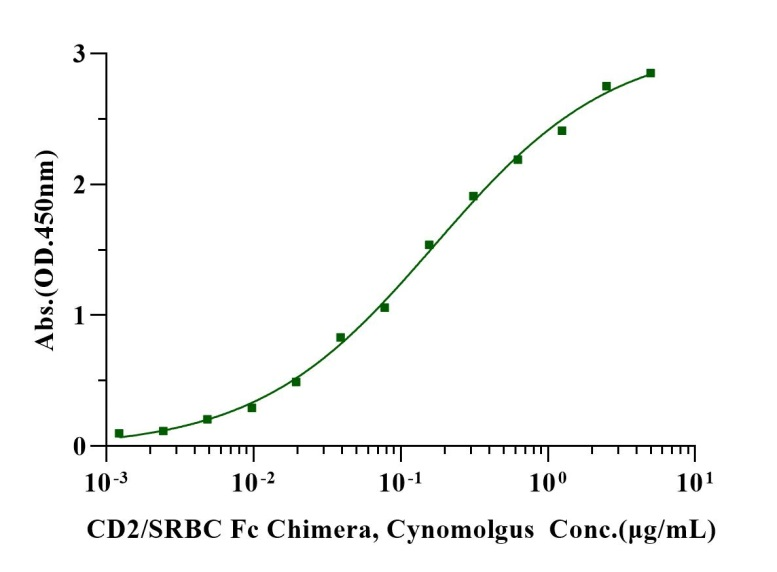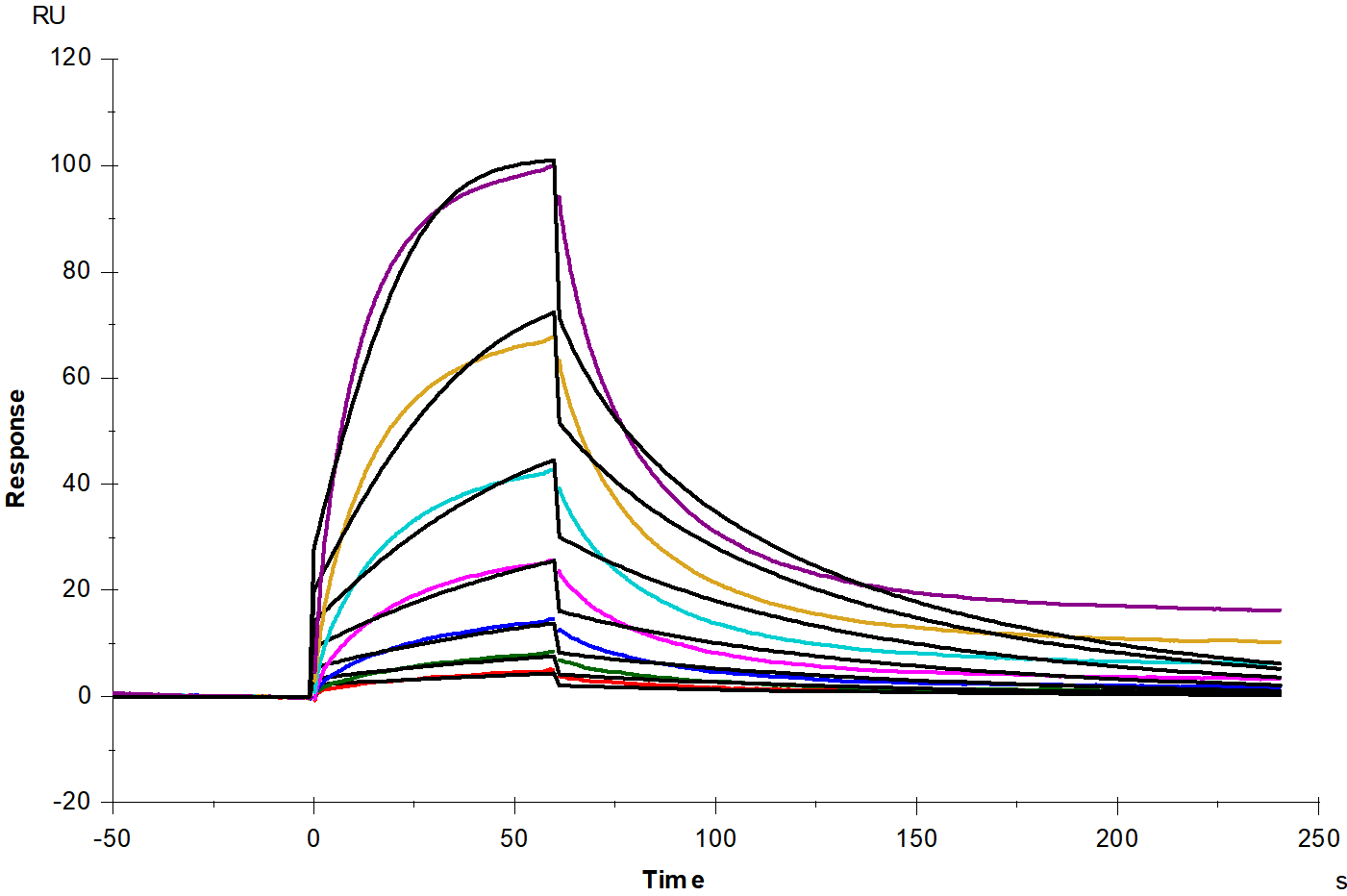Hahn, W.C. et al. (1992). Science. 256:1805. McNerney ME, et al. (2006) The CD2 family of natural killer cell receptors. Curr Top Microbiol Immunol. 298: 91-120.
T-cell surface antigen CD2 is also known as Erythrocyte receptor, LFA-2, LFA-3 receptor, Rosette receptor, T-cell surface antigen T11/Leu-5 and SRBC, is a single-pass type I membrane protein found on the surface of T cells and natural killer (NK) cells. CD2 is a member of the immunoglobulin superfamily.CD2 interacts with lymphocyte function-associated antigen CD58 (LFA-3) and CD48/BCM1 to mediate adhesion between T-cells and other cell types. CD2 is implicated in the triggering of T-cells, the cytoplasmic domain is implicated in the signaling function . CD2 is implicated in the triggering of T-cells, the cytoplasmic domain of CD2 is implicated in the signaling function. The complex of CD2 and CD58 also plays an important role in enhancing the adhesion of T lymphocytes to target cells, and promoting hyperplasia and activation of T lymphocytes. As a cell surface glycoprotein, CD2 expressed on most human T cells and natural killer (NK) cells and plays an important role in mediating cell adhesion in both T-lymphocytes and in signal transduction.

Immobilized CD58/LFA-3 His Tag, Human (Cat. No. UA010759) at 2.0μg/mL (100μL/well) can bind CD2/SRBC Fc Chimera, Cynomolgus (Cat. No. UA010735) with EC50 of 0.14-0.22 μg/mL.
1μg (R: reducing condition, N: non-reducing condition).

Anti-His antibody Immobilized on CM5 Chip captured CD58/LFA-3 His Tag, Human (Cat. No. UA010759), can bind CD2/SRBC Fc Chimera, Cynomolgus (Cat. No. UA010735) with an affinity constant of 20.90 nM as determined in SPR assay.